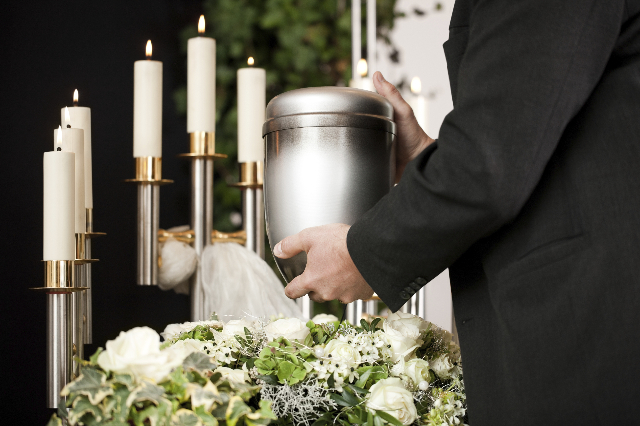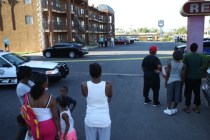What to expect when you’re expecting to be cremated
So you're finally dead. Now what?
Well, if you're one of the more than 17,000 people in Nevada who will be cremated this year, your first stop is likely to be a secure, refrigerated storage room at your local mortuary or crematory.
There, your remains could remain for a wait as long as 48 hours, depending on local laws, while everyone makes sure they don't have you confused with some other dead person who didn't want to be cremated.
"There's more paperwork involved in a cremation, because it's final. It can't be undone," said Larry Davis, general manager of Palm Mortuary-Downtown.
Crematories tend to employ rigorous tracking and verification processes, which in your case involves getting a signed statement from loved ones confirming your identity and checking your body for identifying marks. A numbered metal tag will be attached to your toe for the rest of your journey.
Once all your paperwork has been checked and rechecked, you will be placed in a rigid, combustible box and pushed inside the cremation chamber to be heated by gas-fed flames of 1,600 to 2,000 degrees.
The actual burning takes about two hours, although it varies by body type.
"The thinner the person, the less natural fuel there is," said Barbara Kemmis, executive director of Chicago-based Cremation Association of North America.
As you are incinerated, the machine will capture and filter the smoke from your flaming clothes, casket and anything else that might burn at a different rate than you do.
"We don't want emissions. We don't want to pollute the air," Kemmis said.
After a cool-down period, you will be swept or vacuumed out of the main cremation chamber to be "processed." Any inorganic material that didn't melt away — tooth fillings and artificial joints, snaps and zippers from the clothes you were wearing, jewelry, the hardware from your casket — will be separated out and, in some cases, the metal will be sold to a recycling facility. Kemmis said many mortuaries designate a charity to receive whatever little bit of money they get from the metal they collect from their customers.
The only metal you get to keep is the numbered tag the crematory uses to keep track of you.
All that's left of you at this point are bone fragments, some of them large enough to be recognizable as bone. These will be placed in a crusher to be pulverized into fine grain particles — sort of a sand version of you.
"People often refer to them as ashes, but they're not," Kemmis said.
Davis said most adult bodies produce 4 to 8 pounds of cremated remains.
"It's roughly equivalent to your birth weight, though taller people with larger skeletons are going to produce more remains," Kemmis added cheerily.
The entire process takes three to six hours, Davis said.
Where you go from here is up to you and your loved ones. You can be placed in a mausoleum, buried in a cemetery plot or forgotten in the back of closet. A tiny amount of your remains can be placed in a keepsake necklace, fused into a glass sculpture or blasted into space.
Or maybe you'd prefer to be sprinkled here or there in a place you once loved.
Kemmis said cremated remains are completely benign and pose no health or environmental risks, but that doesn't mean everyone will be happy to see you in your new, powdered form. If your family plans to scatter your not-really-ashes, they need to follow all local laws and get permission before dumping you out on private property.
For example, she said, California requires a permit in some cases, and for scattering in water there are rules about how close to shore an urn may be emptied.
If you hope to be sprinkled at, say, Red Rock Canyon National Conservation Area, officials ask that it be done discretely and at least 100 feet from any road, trail or other developed area.
Kemmis said funeral directors are generally up to speed on what is and isn't allowed when it comes to scattering.
The key is to consider all the nitty-gritty details before you do it, because much like cremation itself, scattering cannot be undone.
"Don't do what 'The Big Lebowski' did," Kemmis said in reference to the 1998 Jeff Bridges film. "Know which way the wind is blowing."
Contact Henry Brean at hbrean@reviewjournal.com or 702-383-0350. Find him on Twitter: @RefriedBrean
One sure bet: Death in Las Vegas






















